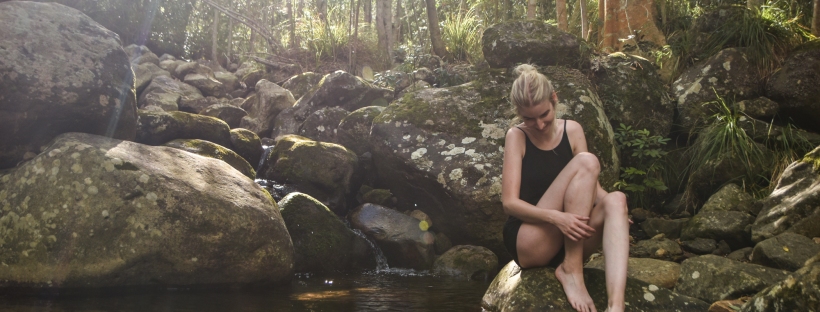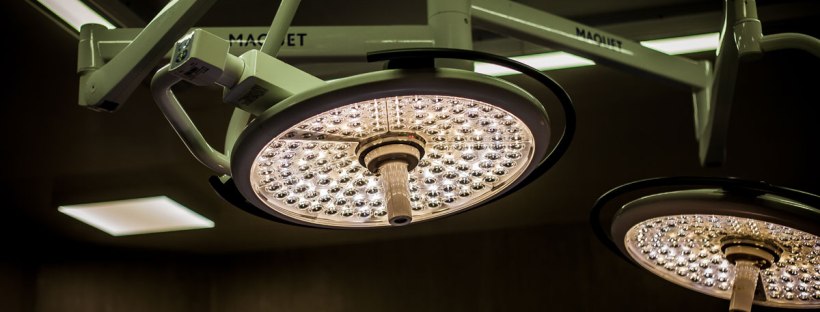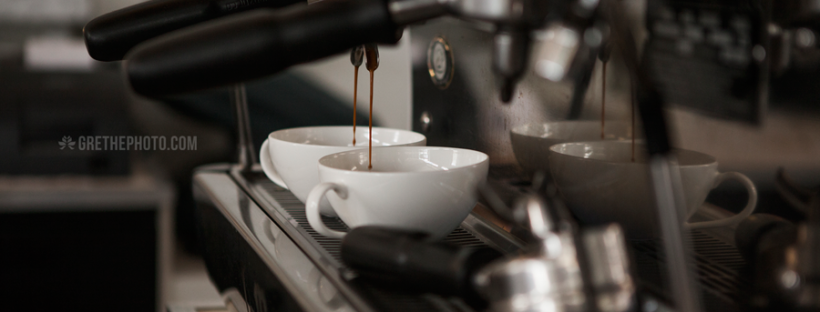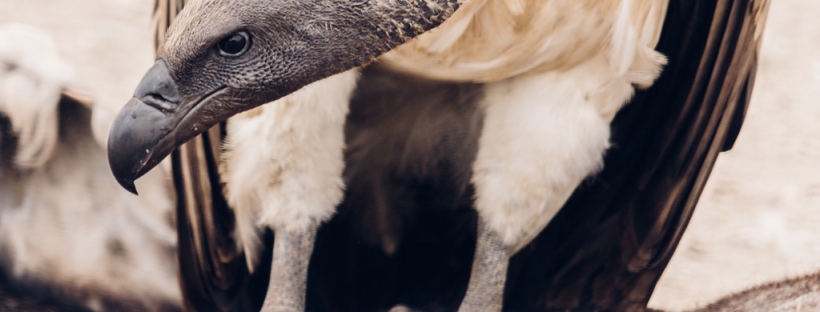A photojournalist recently shared her collection of 2020 pandemic images in the SAWP Facebook group. Being a white woman, issues of poverty porn and remuneration for subjects were raised by other members. The modmin group decided to address the issues in this post!
Two moderators, Natalie van Wyk and Lebogang Molote, are photojournalists by training or trade. Their valuable discussion on the topic is shared here.
Power, ethics, and race in photojournalism
Natalie: There are issues if you go out with your camera and single out people who are poor (them looking at you instead of going about their day to day). Especially as a journalist, paying them is taboo. People from the US have this knack of taking pictures of impoverished children to use in ads that ask for money.
Our Bill of Rights state that children are not to be photographed in impoverished situations, or their identity should be hidden, as it may make their lives even harder.

Gigi Hadid photographed for UNICEF by Vincent Tremeau, using Senegalese children as props.
Lebogang: Everything is about approach and intention. I also do images for couple of NGOs in the community that are supported by organisation such as The Angel Network.
Everything I to shoot when food or clothes are donated I’m caught up on how to present the people receiving the donation.
On the other hand the photos prove that the food and items donated went to the needy. I am not sure how to improve or show images differently. And then again the expressions of the people on the images tells how they feel about being photographed. It’s not an easy one.
From the photojournalistic perspectives and being assigned and paid to do it, it gets tougher.
And its more difficult when it’s a white person photographing black communities. It has to be a relationship, rather than just a snap and go.
On the day before Father’s Day we went around giving food parcels for fathers living on the street. I came across three white men by the robots, but I wasn’t comfortable picking up the camera as I saw things the other way around.
The question I ask is how best can they be represented without looking at colour. This applies to documentary photography too: going into people’s spaces to show their story, and not impose the camera on them because you want to push your own agenda. Respect shows on your images.

Lebogang took this photo and it shook her. “I realised that the same image has been living inside of me simply because I’ve seen it many times. That’s when I took a step back and questioned how I represent people.”
Natalie: Exactly want I meant to say: Don’t try and show the poverty, only the situation.
Lebogang: It’s a sensitive one, but it helps to talk about it.
I mean, even if I want to do photography work, I am not allowed to go to suburban space and start photographing. There are private security firms patrolling who will remove me in five minutes of being there, despite my interest or innocence of photographing trees.
In most communities there is more freedom for a white person to photograph than a black person. But we force it because we can’t be closed in, photographing our space alone.

Lebogang photographs food distribution while protecting the identities of those who receive aid.
Natalie: Even in the white poverty stricken areas, I as a journalist have to jump through hoops to be able to just document the situation. But I am easily able to just walk into informal settlements and shoot.
Lebogang: I think getting in a space like that I have to keep cash or food to give in order to shoot (and that unethical).
Natalie: We all remember those old (and new) MSF and UNICEF ads where the little boy looks up at the camera without smiling, dirty hands and face with torn clothes? Yes those that always said “if you donate $1 you can change this child’s life”! Well that is where poverty porn was born.
Organisations like these came to Africa, India, and South America with no ill-intent, trying to make people aware of the poverty, with disastrous consequences.
People from the US and Europe showed up in droves to take pictures of the poor people and show how “good” and “charitable” they were being. It also pushed this stereotype of these countries not being able to fend for themselves, and why we still daily hear about how Africa is not developed.
The other side of the coin was that these people being photographed started asking to be paid. It got quite lucrative when they noticed that their situation was being taken advantage of, which meant easy money and no intention of changing their situation.
Now where we as photographers come in is to be able to differentiate between documenting the situation or gratifying our own sense of worth by taking advantage of someone else’s dire situation. It’s a tightrope of right and wrong that journalists in a lot of cases struggle to navigate.
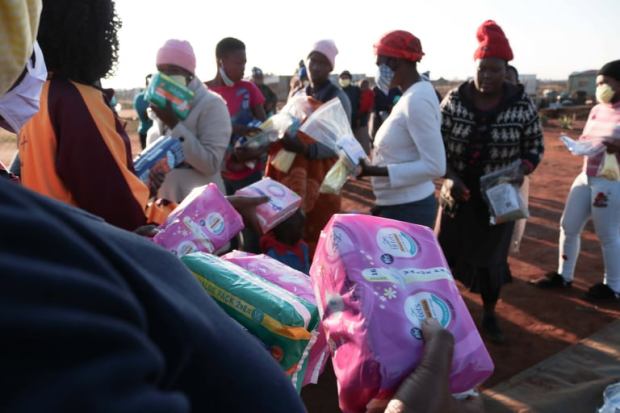
Lebogang shows how one can highlight a brand while protecting the identities of those receiving donations.
Coming from a basic-photography-only background no-one can blame you if you slip up, but we can try educate you. The South African constitution and Children’s Rights Act explains that the identity of people and most importantly children should never be made public when impoverished situations are being documented, as it may put them at risk. In future they could face bullying and being taken advantage of. Therefore you may not photograph a child so their face is visible, not even with a parent or guardian’s consent.
It is all the more difficult in a country like South Africa to navigate. For example, even the informal settlements of white and black people in impoverished circumstances differ. I as a white journalist would be easily able to just photograph in a traditionally black informal settlement, but having personally tried to document the situation of white settlements I have seen that they know their rights.
Also my view as a white person is subjective when it comes to poverty. I may see someone as poor and depict them that way, whereas this is not the idea they have of their own circumstances. Poverty is also not an identity to anyone and the label of ‘poor’ can easily stick to them when the old narrative is pushed that I explained earlier.
A few tips:
- When trying to document people in an impoverished situation, always make the people aware of who you are and why you are there. But never pay to photograph them or even photograph them alone, rather photograph their day to day activities.
- Also, never ever take a picture of someone in this situation from an angle where you look down. It sends a message of them being lesser humans.
- Try and find out if that person sees themselves as poor (don’t straight up ask: that’s just rude) and if you are driving the wrong narrative.
- And finally, always put yourself in their shoes to see if you would be comfortable if it was the other way around.

Lebogang consistently investigates her approach. “I still haven’t figured it out. After each shoot I sit look at the images and ask myself questions based on what I saw, how I saw it, and how I represented the event.”
Thato: Let’s also acknowledge the power dynamics. If I offer someone who is poverty stricken money for their consent to be photographed; their acceptance doesn’t mean it’s okay. They are trying to survive, so anything you offer they will take. The power dynamics are skewed.
Lebogang: Just by carrying a camera you have power. It demands respect.
Do we respect people we are interested in? Do we respect our subjects?
Natalie has explained the reason Africa is seen the way it is. Those visuals remain there: going on Google you’ll still find those on top. It is our responsibility to change it.

